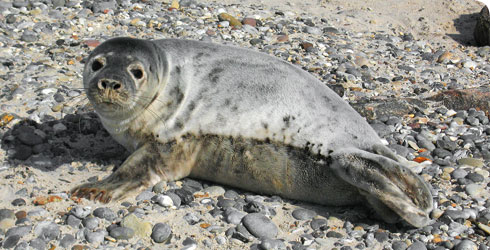Conservation
Conservation status
Grey seals are listed as being of least concern on the International Union for Conservation of Nature (IUCN) red list of threatened species (IUCN, 2010).
Grey seals are now protected, although controlled hunting still occurs in some areas. Regular counts of grey seal populations suggest they are increasing (Perrin, 2009).
Under the Conservation of Seals Act 1970, the Natural Environment Research Council is under obligation to the UK government to provide advice on the British seal populations (Special Committee on Seals, 2009).
Threats
Grey seals face several threats.
Historically, populations of grey seals have suffered pressures from hunting and poaching. Some Atlantic populations were targeted because they were thought to be damaging commercial fishery stocks, either directly or indirectly (Jefferson et al, 2008). Grey seals can also become entangled in fishing nets.
Another danger of being a coastal species is the threat from industrial and agricultural pollutants appearing in the food chain. These can affect the seals' immune systems and within the Baltic populations has been linked to decline in reproduction (Jefferson et al, 2008).
Phocine distemper virus (PDV) is carried in all grey seal populations, although they are not significantly affected (Harkonen et al, 2006; Barrett et al, 1995) by the disease and are less sensitive than harbour seals. Grey seals make a more efficient antibody response than harbour seals to virus proteins (Duignan, 1997). However, grey seals may contribute to transporting the disease to harbour seal populations as they often share the same haul out sites (Harkonen et al, 2006).
